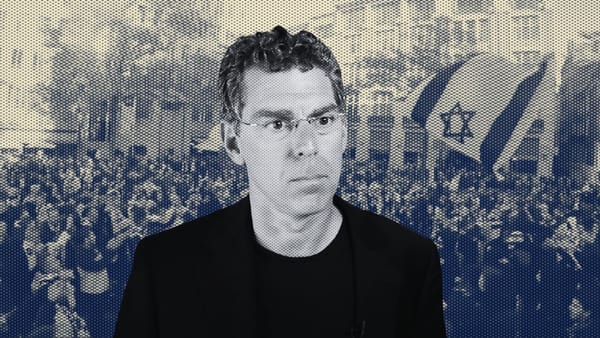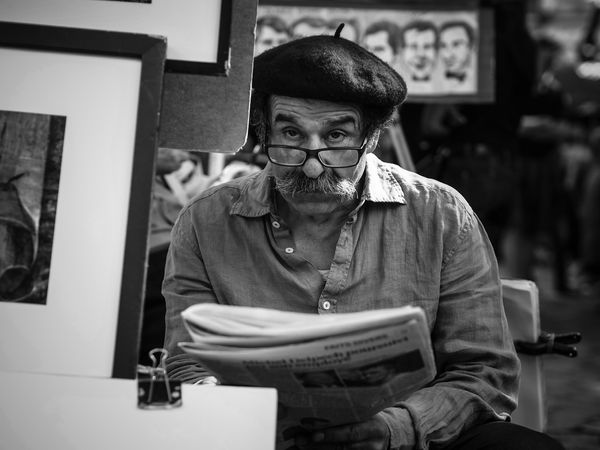Netflix’s limited series The Watcher, released earlier this month, has been a colossal success, rapidly becoming one of the biggest shows on the platform.
The story is based on a 2018 article from The Cut, which reported on the experiences of the Broaddus family. In 2014, the family moved into a house in Westfield, N.J. Shortly thereafter, they were terrorized by frightening letters from someone who called themselves “The Watcher.” The figure was apparently obsessed with the Broaddus house, portraying it as an almost sentient presence, and seeing their planned renovations as an affront to the neighbourhood as a whole.
As one letter from The Watcher read, “The house is crying from all of the pain it is going through. You have changed it and made it so fancy. You are stealing it’s history. It cries for the past and what used to be in the time when I roamed it’s halls. The 1960s were a good time for 657 Boulevard when I ran from room to room imagining the life with the rich occupants there. The house was full of life and young blood. Then it got old and so did my father. But he kept watching until the day he died. And now I watch and wait for the day when the young blood will be mine again.”
The story of the Broaddus family is tied up in the ideological dream of property, the often complex and antagonistic idea of neighbourliness, and, of course, financial capital. Unable to live in the house because of the threatening letters, and unable to sell it, the family was, in effect, trapped, haunted by someone they couldn’t confront.
Housing is one of the most important human needs, and yet, it’s bound up with market forces, transformed into a commodity, and thus, subject to uncanny and terrifying forces — not for nothing did Karl Marx write about the occult nature of the commodity. This reality is the motivating force behind much of the past few decades of horror cinema, which have seen a proliferation of films about haunted homes and possessions. These films haven’t maintained their popularity because of the story they tell us, which can often be formulaic and predictable, but rather because of the way they serve as an allegorical response to our shared economic vulnerability.
A classic example in this genre is the 1979 film The Amityville Horror. It follows the Lutz family who move out of New York City to the quiet suburbia of Amityville on Long Island. The house they move into, which was the sight of a murder the year earlier, is cursed, and the family is subjected to a litany of terrifying events from strange noises in the night to blood oozing from the walls. At one point, they discuss the idea of leaving the house, but simply can’t as they have too much money tied up in the property — exactly the same reason that the Broaddus family couldn’t leave their home, either.
This story is made far more powerful when connected to its historical context. Leaving aside the fact that the film was based on a sensationalized true crime story, 1979 was also the year of a global spike in oil prices and a period of high inflation, low economic growth, and interest rates that would make mortgage payments prohibitively expensive for many. It’s not a surprise then that a film depicting a family trapped in a home subject to forces they can’t understand or control proved to be colossally popular with audiences, becoming one of the most profitable films of the entire year. It took its place in a host of other films from the late ’70s and early ’80s that were directly about the anxieties of property, such as The Shining (1980), The Hearse (1980) and Poltergeist (1982).
In times of economic instability, home is not where we feel safe. In fact, it’s often where we’re most vulnerable. No matter how hard we try, mortgage costs can spiral, while rents can double or triple, seemingly on the whim of powers outside our control. Horror has historically served as an invaluable cultural form to understand the psychological impact of living through the bubble and bust of the spectral forces of financialization as they make themselves known, right where we live.
This has absolutely held true over the years in many contexts. In 2007, for example, just as the subprime mortgage crisis was threatening to derail the world financial system, the first film in the Paranormal Activity franchise was released. This was a low-budget found footage-style horror, which followed a young couple who got themselves a nice house outside San Diego. It’s almost certainly outside of their budget, but in an era of cheap credit and mortgage payments, they, like so many others, thought it was worth the risk.
This film wasn’t alone, as the crisis of capitalism that the subprime mortgage collapse precipitated saw an explosion in movies that directly concerned themselves with the horror of finance, and the ways in which the global forces of capital can make their way into your home. One of the most viscerally effective films from this era is Sam Raimi’s Drag Me To Hell (2009), a complex meditation on the idea of risk: risky investment in the world of finance, and the fragility and contingency of life lived in capitalism at a moment of crisis.
The film follows Christine, a mortgage officer at a bank, who (trying to get tough on customers in order to win a promotion) tells an elderly woman that the bank is going to repossess her home. In response, the woman curses Christine. Where the aforementioned films treated the economic anxiety of property as an allegory for possession, Drag Me To Hell makes the connection far more explicit. Trying to negotiate with her boss to grant a mortgage extension, Christine is told instead that the bank needs to get its hands on the trapped equity. In a simple shift of language a house can stop being a home — a necessity — and become equity to be acquired. Homes become fungible, something to be possessed and repossessed by spectral forces, traded in a sea of liquidity. As the culture critic and theorist Annie McClanahan points out in her book, Dead Pledges, the gross and splattery horror of the film — all the vomit, blood and various kinds of goo that Christine is subjected to — are directly linked to an economic obsession with liquidity: with transforming the solid stuff that we need into endlessly exchangeable financial assets.
With this historical context in mind, and the fact that Canadians are facing some of the highest inflation rates in decades and are deeply concerned about housing costs, it isn’t a surprise that The Watcher series has become so popular. There’s something in your house, but it’s not a ghost or demon. Rather, it’s the spirit of finance capitalism, in crisis once again.






